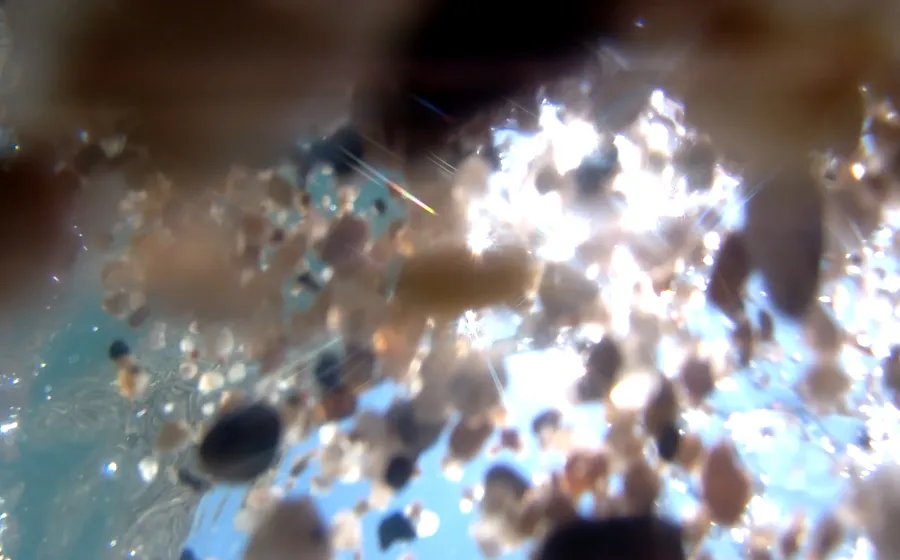Silvia Zayas
Date
Venue
Price
Free access until full capacity
Category
Format
Institution
Silvia Zayas (León, 1978) works at the boundaries of the living arts, film and expanded choreography. Part of an investigation into other modes of perception, her ê focuses on the senses of sharks and rays and on how they communicate, issues largely unknown to current science.
The artist has worked with Michel André, a specialist in the bioacoustics at the UPC Bioacoustics Applications Laboratory, and with Claudio Barría, a specialist in elasmobranchii (rays and sharks) at the Institute of Marine Sciences-CSIC and co-director of the Catsharks Association in Barcelona. She has also collaborated with the likes of Miguel Aparicio, A Smart Workshop, and Underwater Barcelona, in a network of work in constant transformation, expansion and dialogue. Zayas invents filming devices using low-quality cameras without viewfinders, which, strapped to the bodies underwater, record without resorting to the standard hand-eye mode. Everyday over a period of months, she pays slow attention to phenomena that produce variations in the underwater environment: energy points, sudden encounters, sudden increases in the speed of the water...
ê describes a nasal sound that does not exist in Spanish but is found in the artist’s mother tongue which is Portuguese. It’s like the sound you hear when you hold your nose to equalise the pressure under water, but somewhat deeper. It’s also the last sound that remains when language disintegrates in a story by the Brazilian writer Guimarães Rosa.
The exhibition is a womb occupied by a central film, ê, and other works in different formats, which are merely deformed condensations of the experience of relating to other ways of feeling/perceiving, a story that, like the research itself, has its flows, slownesses and narrative gaps. A film of haptic visuality, of rhythms, beats, clicks, impulses.
In Zayas’ own words: “The images we see in ê were filmed in the marine ecosystem of urban areas of the Catalan Mediterranean. Some of them bear witness to the imminent mutation of the breakwater of the San Sebastián beach in Barcelona, where extension work has just begun. Others were filmed in the forest of concrete poles of the Pont del Petroli which was partly demolished by hurricane Gloria. Others in waters where fishermen’s hooks prevail, around industrial breakwaters. And some, at a much greater depth, beneath the undetectable light of a lighthouse.
Through apnoea and night diving, Claudio and I began a specific search for resident populations of electric rays (the Torpedo Torpedo species). As we dived, we asked ourselves why, unlike other species of rays in danger of extinction in the Mediterranean, these are the only ones that seem able to resist various types of pollution, including noise pollution. These rays are popularly known as “tremblers”, a noun that becomes a verb because if they give you a shock, they’ll make you “tremble”. Rays leave traces in their wake, evidence abandoned after they leave their hiding places in the sand. Camouflaged presences. How they effectively disappear from almost every image.”
This work was selected in “Depth of Field”, an extraordinary open call to support audiovisual projects within the framework of Matadero Crea- 2020/2021.

